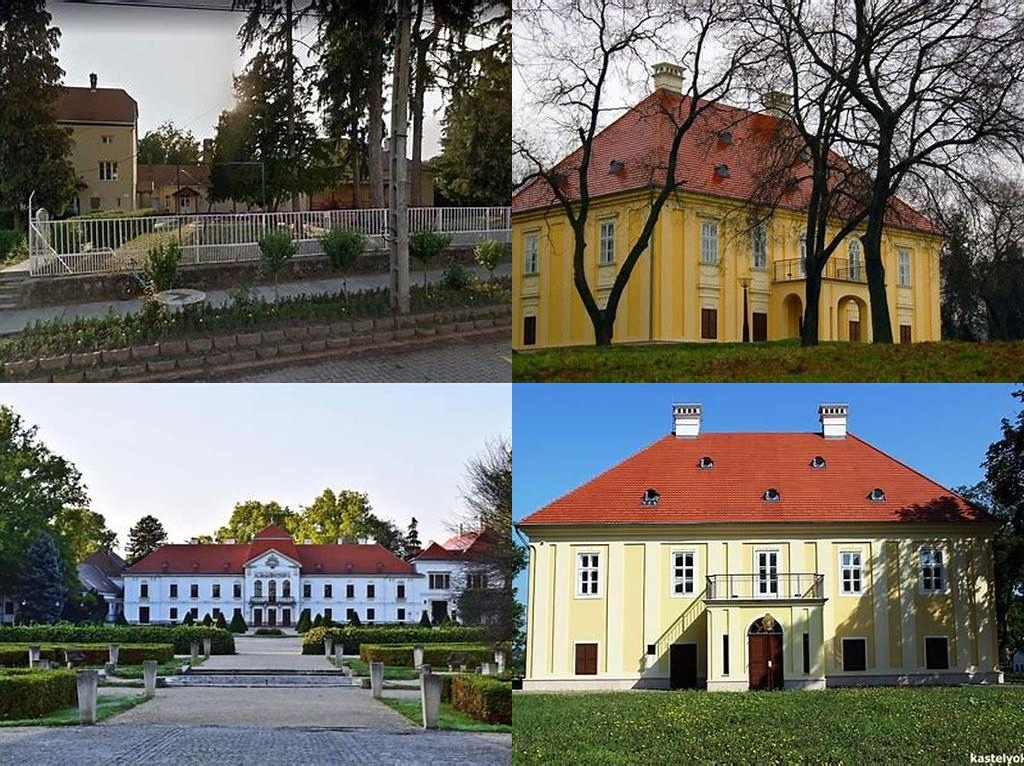
Széchenyi-kastély in the sleepy, green-bordered village of Csokonyavisonta might not be the first place that leaps out of a Hungarian guidebook—but let’s be clear, it is all the better for its subtle charms and unique sense of serenity. When other travelers hustle toward giant, crowded palaces, discovering this off-the-beaten-path mansion feels a bit like being handed a secret that few outsiders know. The village, with its curious and hard-to-pronounce name (don’t worry, you’ll get used to it), sits in the rolling Somogy County countryside: a region with more leafy lanes and undisturbed woodlands than many urban visitors have ever dreamed of. Set within it, the mansion quietly unfolds its story, steeped in the aura of Hungarian aristocracy, elegant old architecture, and the lure of faded grandeur.
The story of the Széchenyi-kastély begins in the mid-19th century, under the careful stewardship of the prestigious Széchenyi family. If you’ve heard the name before, you’re onto something—this was not any old rural family, but part of the lineage that gave Hungary one of its greatest statesmen: István Széchenyi, a central figure in the country’s reform-era history. Although István himself may not have lived within these walls, his legacy in fostering progress and beauty is everywhere, from the stately façade to the layout of the grounds. Walking up to the mansion, the pale yellow of its neoclassical walls seems to radiate the gentle optimism of the period around 1840, when much of the estate was given its present form. The robust yet refined lines and columned portico hint at both prosperity and good taste—a world apart from the humdrum manors or fortified castles elsewhere.
Stepping inside feels less like entering a museum and more like being invited for afternoon tea in another century. While the Széchenyi-kastély is by no means a sprawling, ostentatious palace—there is a distinct charm to its approachable scale and how every room seems to whisper stories. Old portraits in their slightly chipped frames gaze back with that peculiar combination of formality and faded friendliness. Sunlight filters through tall windows, illuminating details: carved bannisters polished by generations, centuries-old tiles underfoot, and the faintest trace of tobacco in rooms that once hosted spirited discussions about Hungary’s future. You can imagine the rustle of silk dresses during evening dances, the clink of glasses in the library, and—the highlight after a long day in the saddle—the anticipation of rich local stews brought piping hot to family and guests.
But the mansion isn’t a mere relic, encased in nostalgia. For decades, the estate has adapted to changing times. After waves of reform and upheaval rattled Hungary in the early twentieth century, many former noble estates fell into ruin, repurposed or simply abandoned. Yet Széchenyi-kastély survived by embracing new roles. During the postwar era, it saw use as a school and housing, gently reshaping its rooms for communal life. More recently, the estate has started to whisper again to travelers who seek out authenticity and a brush with history that is gentle rather than overwhelming. Walking the wide veranda or wandering the surrounding parkland, you may well be alone, left with little but breeze, birdsong, and your own imagination—a rare luxury in an age of selfie-stick tourism.
The grounds are truly worthy of a slow, aimless stroll. Mature plane trees and chestnuts shade the park lawns, many of which have stood since the mansion’s earliest days. If you visit in autumn, a quiet riot of foliage decorates the gardens in sunlit mosaics of gold and red. Benches, a little wonky perhaps, invite you to sit and consider the long arc of history that brought you and this old Hungarian family to the same tranquil corner of Europe. There are little surprises here, too: a weathered sundial, a pond where frogs natter, and maybe—if you’re lucky—a local showing you their favorite raspberry bushes.
One can’t talk about a visit to Széchenyi-kastély without mentioning its unique sense of peacefulness. Unlike crowded tourist hotspots, the mansion in Csokonyavisonta isn’t competing for your attention. Instead, it proposes a gentle form of discovery, rich in texture and story. Whether you’re an architecture enthusiast, a history buff, or simply in need of an afternoon away from rush and noise, the mansion provides a kind of escape that feels profoundly restorative.
When you eventually leave, perhaps after a slow amble back through the gates past the creaky old oak trees, you might just feel you’ve met the truest side of Hungarian heritage—a place where history lingers not in displays but in atmosphere, and where the grandeur of the Széchenyi family modulates into something warmer, something human, and something quite unforgettable.





